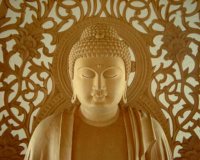Fifth Peak Buddhism
I came across this interesting article on Buddhism and The Work of Byron Katie: Fifth Peak Buddhism, by Kevin Maher. In it, Maher explores - as so many others, how this form of inquiry is similar to Buddhist practices, and leads to similar or identical (?) insights, realizations and transformations. The title, Fifth Peak Buddhism, refers to the four historical peaks of Buddhism (initial teachings, Mahayana, Tantric, and Tibetan and Japanese versions) and the fifth peak, which may occur in the west, may or may not be called Buddhism, and may or may not have any historical links with Buddhism.
In it, Maher explores - as so many others, how this form of inquiry is similar to Buddhist practices, and leads to similar or identical (?) insights, realizations and transformations. The title, Fifth Peak Buddhism, refers to the four historical peaks of Buddhism (initial teachings, Mahayana, Tantric, and Tibetan and Japanese versions) and the fifth peak, which may occur in the west, may or may not be called Buddhism, and may or may not have any historical links with Buddhism.
The Big Mind process can be seen as one example of fifth peak Buddhism, one with obvious historical links and connections with Buddhist tradition (coming out of the Maezumi Roshi and Soto/Rinzai Zen lineages).
As the author says, The Work can certainly be seen as another expression of fifth peak Buddhism, this one with no historical connections to Buddhism. And that may be very good. It makes it open for those who has no connections with Buddhism (and wouldn't want any connections with Buddhism), and those who do. Also, it is a clean slate, free of historical baggage. It is just what it is - four questions and a turnaround, allowing each individual to explore what is true for them, and find liberation there.